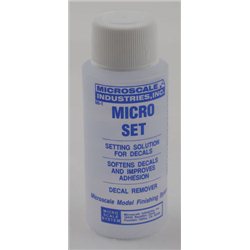Static grass puffer bottles work by manually charging model grass fibres with static electricity. When the charged...
No products
Product successfully added to your shopping cart
There are 0 items in your cart. There is 1 item in your cart.
Search Tips
How do you apply decals to a curved surface?
All of these solutions assist in creating a realistic-looking, painted-on effect for decals. Typically this helps those building model aircraft to get their decals to contour to raised or recessed panel lines and to adhere to awkward curving surfaces such as aircraft engine cowlings. Additionally, any modeller building 1:350 or 1:700 Aircraft Carriers faces a significant challenge in getting decals to adhere to the highly curved surfaces of carrier aircraft in these scales. The high surface tension of the backing film can mean that these are very tricky scales for decals to work with. The careful application of Decal Fixing products can lead to impressive results, giving a level of detail that would be very difficult to achieve by any other means.
Click here to receive the tips weekly in your mailbox. You can unsubscribe at any time.










